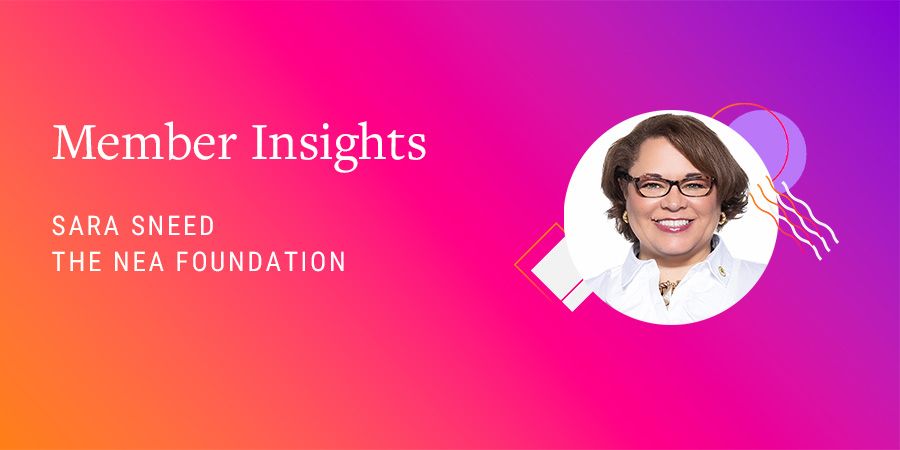Resources
Knowledge begins here
but never ends.
Curated reports, deep research, informational articles, podcasts. Everything you need to stay well
informed in the world of education grantmaking.
Member Insights: Investing in the Deep South

"If you’ve never been on a bus filled with education grantmakers from across the country... let me be the first to tell you: it’s an experience you won’t soon forget." Sara Sneed, president and CEO of The NEA Foundation, shares a journey through history, community and possibility in the Deep South.
What’s It Like to Lead Grantmakers for Education in Tumultuous Times?
Trends in Education Philanthropy: Benchmarking 2025
.
FILTER RESOURCES
SEARCH RESOURCES
State of American Philanthropy: Giving for K-12 Education
This background paper covers important topics and trends in U.S. giving to K-12 education. It draws on past research and reporting by IP writers, as well as new interviews, grantmaking data, and other sources including Grantmakers for Education.
National, Regional Trends in Educators' Covid-Relief Spending
This FutureEd report is an analysis of the Covid-relief spending plans of nearly 2,100 school districts and charter school organizations in 48 states, local education agencies serving some 40 percent of the nation’s public-school students. FutureEd identifies national spending trends and patterns in the four U.S. Census Bureau regions, since the demographics and educational profiles of the regions vary.
We’re Not All Average: Reconceptualizing School Climate to Acknowledge Diverse Student Experiences in Schools
How students feel about their schools—their perception of the safety, inclusiveness, rigor, and collaboration in the learning environment—is an increasingly important part of conversations about school quality and improvement. Building on the Research Alliance’s longstanding work with the NYC Department of Education on its annual School Survey, this report uses survey data from 2015 through 2019 to begin to answer questions on school climate.
Student Financial Wellness Survey
Releasing the Potential of Philanthropic Collaborations
Philanthropic partnerships are having their day in the sun. Their impact could be even greater with a clearer path to investing in collaborative funds and a shift in donor mindsets.
School Instruction in Pennsylvania During the COVID-19 Pandemic
This brief provides an overview of how local education agencies in Pennsylvania, including both traditional school districts and charter schools, implemented different approaches to deliver instruction and support students’ needs during the 2020–2021 school year.
Submit A Resource
Expand your audience by expanding minds.
We believe in getting research and insights into more hands to support learning for our peers and community. Share your resources that would be useful to education grantmakers.





